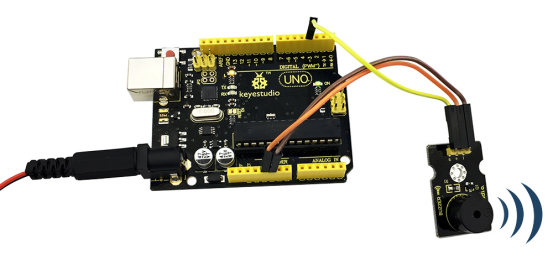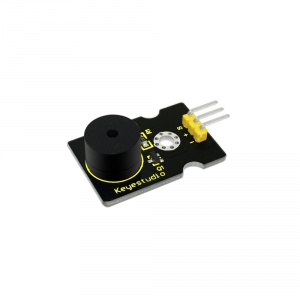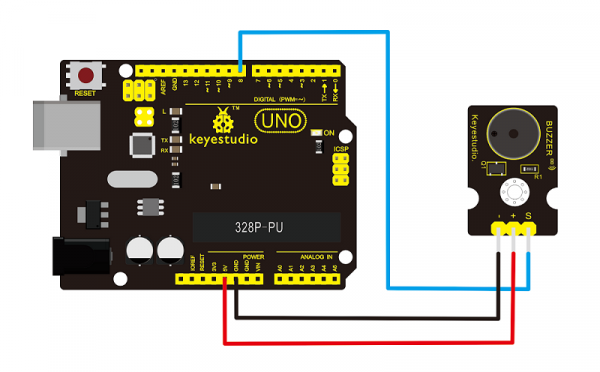Ks0019 keyestudio Passive Buzzer module: Difference between revisions
Jump to navigation
Jump to search
Keyestudio (talk | contribs) |
Keyestudio (talk | contribs) |
||
| Line 66: | Line 66: | ||
*[https://www.keyestudio.com/free-shipping-keyestudio-passive-buzzer-alarm-module-for-arduino-p0158.html '''Official Website''' ] | *[https://www.keyestudio.com/free-shipping-keyestudio-passive-buzzer-alarm-module-for-arduino-p0158.html '''Official Website''' ] | ||
*[https://ru.aliexpress.com/store/product/Free-shipping-Keyestudio-Passive-Buzzer-Alarm-Sensor-Module-for-Arduino-CE-FCC/4247007_32887250232.html?spm=a2g0v.12010615.8148356.9.6d4a6c9b9Ib3uF Shop on aliexpress] | *[https://ru.aliexpress.com/store/product/Free-shipping-Keyestudio-Passive-Buzzer-Alarm-Sensor-Module-for-Arduino-CE-FCC/4247007_32887250232.html?spm=a2g0v.12010615.8148356.9.6d4a6c9b9Ib3uF '''Shop on aliexpress'''] | ||
[[category:Module]] | [[category:Module]] | ||
Revision as of 14:47, 12 April 2019
Passive Buzzer Module
Introduction
We can use Arduino to make many interactive works of which the most commonly used is acoustic-optic display.
The circuit in this experiment can produce sound. Normally, the experiment is done with a buzzer or a speaker while buzzer is simpler and easier to use.
The buzzer we introduced here is a passive buzzer. It cannot be actuated by itself, but by external pulse frequencies. Different frequencies produce different sounds.
We can use Arduino to code the melody of a song, which is quite fun and simple.
Specification
- Working voltage: 3.3-5v
- Interface type: digital
Connection Diagram
Sample Code
int buzzer=8;//set digital IO pin of the buzzer
void setup()
{
pinMode(buzzer,OUTPUT);// set digital IO pin pattern, OUTPUT to be output
}
void loop()
{ unsigned char i,j;//define variable
while(1)
{ for(i=0;i<80;i++)// output a frequency sound
{ digitalWrite(buzzer,HIGH);// sound
delay(1);//delay1ms
digitalWrite(buzzer,LOW);//not sound
delay(1);//ms delay
}
for(i=0;i<100;i++)// output a frequency sound
{
digitalWrite(buzzer,HIGH);// sound
digitalWrite(buzzer,LOW);//not sound
delay(2);//2ms delay
}
}
}
After downloading the program, buzzer experiment is complete. You should hear the buzzer ringing.

Resources
- Video
http://video.keyestudio.com/ks0019/
- Datasheet
https://drive.google.com/open?id=1al1MJhVE6ObEOGmsg31O0NANxWcITDP2

